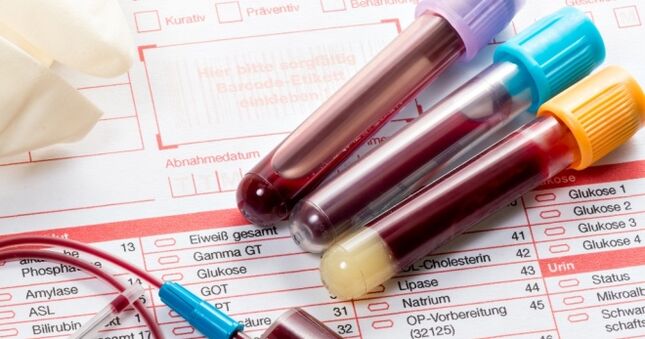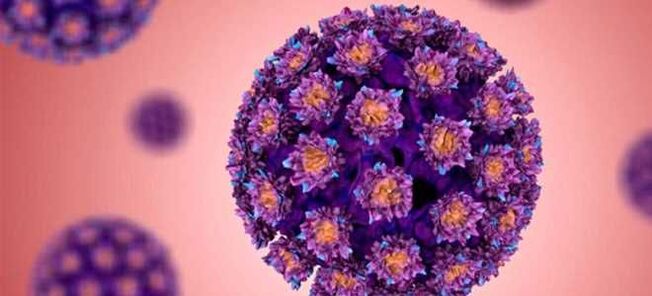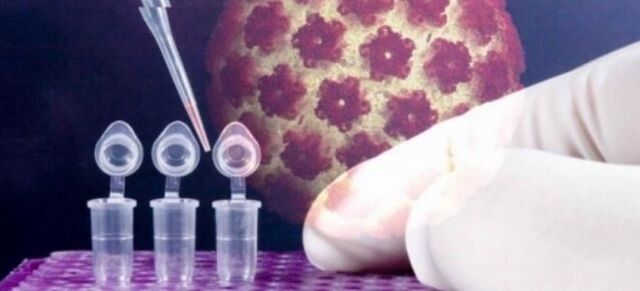
When there are signs and symptoms of the disease, doctors prescribe many laboratory tests to confirm the prognosis and make a diagnosis. In the list of appointments, patients can find an HPV test: what it is, why and when it is prescribed - not everyone can answer.
What is HPV?
Human papillomavirus (HPV) is a group of infectious diseases that resemble a common virus. Scientists know of more than 100 strains of the virus, and not all of them are dangerous to humans. Most of them remain invisible in the body for a long time and cause transport. However, about 14 types of this virus are oncogenic - they can cause the development of malignant tumors. When diagnosing, doctors always pay attention to the type of HPV and its oncogenicity, which determines the further course and nature of treatment.
Human papillomavirus - types
Papillomavirus is usually classified according to the risk of causing the cancer. Given this factor, there are three main groups of HPV:
- Not oncogenic- Never cause malignant tumors.
- Low oncogenic risk- Under certain conditions may contribute to the development of cancer: 6, 11, 42, 43, 44.
- High oncogenic risk- It is difficult to prevent the development of malignant tumors when infected with HPV. Human oncogenic papillomaviruses: 16, 18, 31, 35, 33, 45, 58, 59, 52.

How is human papillomavirus transmitted?
Knowing how Papillomavirus is transmitted reduces the risk of infection. But in practice it is difficult to prevent it. In most cases, the infection occurs with the onset of sexual activity: sexual intercourse is the main route of transmission of the virus. It can also be transmitted by kissing when micro cracks and scratches appear on the lips. If you break the rules of hygiene when visiting public places, you can still be infected:
- saunas;
- a swimming pool:
- baths;
- as well as using someone else's toothbrush, towel, or razor.
Infection can also occur when a baby passes through the mother's infected tract during childbirth. Experts do not rule out the possibility that the virus can be transmitted through contact: it is unstable, but can maintain any activity.Among the factors that cause HPV infection are:
- early onset of sexual activity;
- a large number of sexual partners;
- sexually transmitted infections;
- Decreased immunity.
Human papillomavirus is a symptom
Human papillomavirus can remain invisible in the body for a long time. The incubation period, according to experts, can last from 2 months to 2 years. The disease goes unnoticed: there are no clinical symptoms, the main diagnostic methods show the norm. One in three patients recovers within 6 to 12 months of infection due to the immune system.
HPV damage to the body is reduced to the appearance of clinical skin structure. Patients notice papillomas, warts and condyloma on the skin. Their localization can be different and depends on where the virus enters the body: genitals, hands, lips. These structures resemble papillary growths, sometimes resembling cauliflower on the outside. Growths do not hurt, but with friction and injury they can cause pain and bleeding.

Why do I need an HPV test?
Talking about the virus, we turn to the information about the HPV test: what kind of study it is, how it is carried out and in what cases it is prescribed. To begin with, we note that if human papillomavirus is suspected, the analysis can help confirm or rule it out. This study aims to:
- detection of HPV at high oncogenic risk;
- Confirmation / management of the resistance of a particular type of HPV;
- Assessing the risk of cancer in patients with cervical epithelial dysplasia.
In addition to the reasons mentioned for the examination, the HPV test (what is it - mentioned above) can be indicated in the following cases:
- Initial screening for cervical cancer in women over 30 years of age.
- Evaluation of the results of surgical treatment of intraepithelial neoplasms.
- Doubtful results of cytological examination of gynecological smears.
What tests should I take for HPV?
There are several ways to detect the presence of papilloma virus in the body. However, in most cases, doctors resort to PCR. If an HPV test is required, patients will be tested directly. Various biological body fluids can be used as research material:
- blood;
- urine;
- amniotic fluid (in diagnosing disease during pregnancy).
While talking about HPV analysis, what it is and how it is performed, it should be noted the possibility of studying tissue material. Thus, during colposcopy, the doctor carefully examines the mucous membrane of the cervix. The presence of small papillomas in them is direct evidence of HPV damage to the body. For confirmation, a small piece of tissue is examined under a microscope to rule out damage.
HPV diagnostic methods
Diagnosis of HPV is a set of measures aimed at detecting the presence of the virus and its type. To do this, the following methods are used:
- Digen test- modern precision method. It can be used to determine the concentration, type and oncogenicity of a virus in the body. The material for the study is the removal of the mucous membrane of the urethra or vagina. It is often used in conjunction with cytology.
- Diagnosis of HPV PCR- The most common simple and affordable diagnostic method. The material used is the patient's blood or urine. Assumes the detection of traces of viral DNA in the sample.
- Cytological examination- Examination of the smear under a microscope. The evaluation criterion is the presence of modified cells in the humor - dyskeratocytes and coilocytes.
- Detection of antibodies to HPV- Helps to detect viral infections at an early stage. Disadvantage - it is impossible to determine the concentration and type of virus.
- Histological examination is the study of a sample of affected tissue to determine the type of HPV and its oncogenicity.

Human papillomavirus - how can it be tested?
Prior to the examination, and even during the referral, the doctors will tell the patient in detail how to take the HPV test at a particular time. The analysis algorithm may vary depending on the methods used and the materials of the examination. It is important to prepare for the study. Proper implementation of all items of the preparatory measures will allow to obtain objective results of the analysis and eliminate the need for repeated implementation.
Preparing for an HPV test
Before testing for HPV, the patient must meet a number of conditions. In this case, the method of the survey and the type of material for analysis are crucial. It is expressed as follows:
- blood;
- urine;
- swab of the vagina or urethra.
Depending on the type of biological fluid being studied, the patient is given advice on how to prepare for the test the day before. It is the responsibility of the examiner to fully comply with the rules of preparation. This prevents you from getting false results, and in some cases, false results when the result shows that you do not have HPV.
HPV blood test
When talking about how the HPV test is taken, it should be noted that in most cases the patient’s blood is used for it. The study is performed on an empty stomach: 10-12 hours before the expected time of reception of the material, the patient should not eat, you can use plain still water as a beverage. It is forbidden to consume alcohol, fatty and unhealthy foods 2-3 days before the test. In this case, only the diagnosis of HPV in the blood allows you to get an accurate test result.
HPV smear analysis
This method is often used to study the fairer sex. Before women are tested for HPV, they are prepared for this test. The doctor acquaints the patient with all the rules of preparation. In this process, the following important points can be highlighted:
- The swab is taken before starting a course of antibiotics or 2, 5 weeks after the end of treatment.
- On the day of the exam, it is forbidden to go to the toilet with the use of chemical hygiene products.
- It is forbidden to take a shower or use vaginal suppositories.
- You must abstain from sexual intercourse the day before you receive the material.
- Analysis between cycles is ideal, and testing is prohibited during ovulation.

Decoding HPV analysis
Only a doctor can correctly interpret the results of the HPV test. The specialist assesses not only the quantitative value of the indicators, but also the clinical picture, the possible signs of infection. Getting a complete picture of what is happening will help you choose the right medication and choose the most effective treatment. At the same time, it is important to take into account the importance of timely diagnosis and treatment: the risk of developing malignancies increases with age.
Quantitative HPV analysis
When the HPV test is performed using a quantitative test, decoding involves determining the concentration of the virus during the study. This will help determine the right tactics to manage the patient. Real-time PCR (RT-PCR) measures the amount of HPV DNA in a test sample. This is necessary for regular dynamic monitoring of a particular type of human papillomavirus.
However, even those who know about HPV testing cannot interpret the results on their own, what it is and how it is performed. This should be done in conjunction with a patient examination and other studies. In the assessment, experts adhere to the interpretation of the following indicators:
- lg< 3- low risk of developing dysplasia;
- lg 3-5- Clinically significant outcome, risk of cervical dysplasia;
- lg >5- high probability of dysplasia, possibly in the early stages of the disease.
Qualitative analysis of HPV
HPV analysis of high oncogenic risk is performed using this method. Helps identify 16 and 18 types of HPV. These types of viruses most commonly cause female genital cancer and squamous cell carcinoma, genital warts, and cervical dysplasia. The efficiency of HPV DNA detection reaches 98%. The conclusion suggests an answer indicating each type of virus. There are two possible outcomes: found / not found.














































































